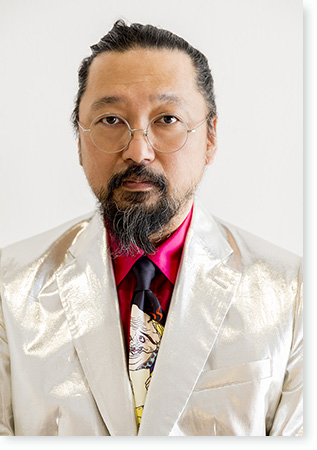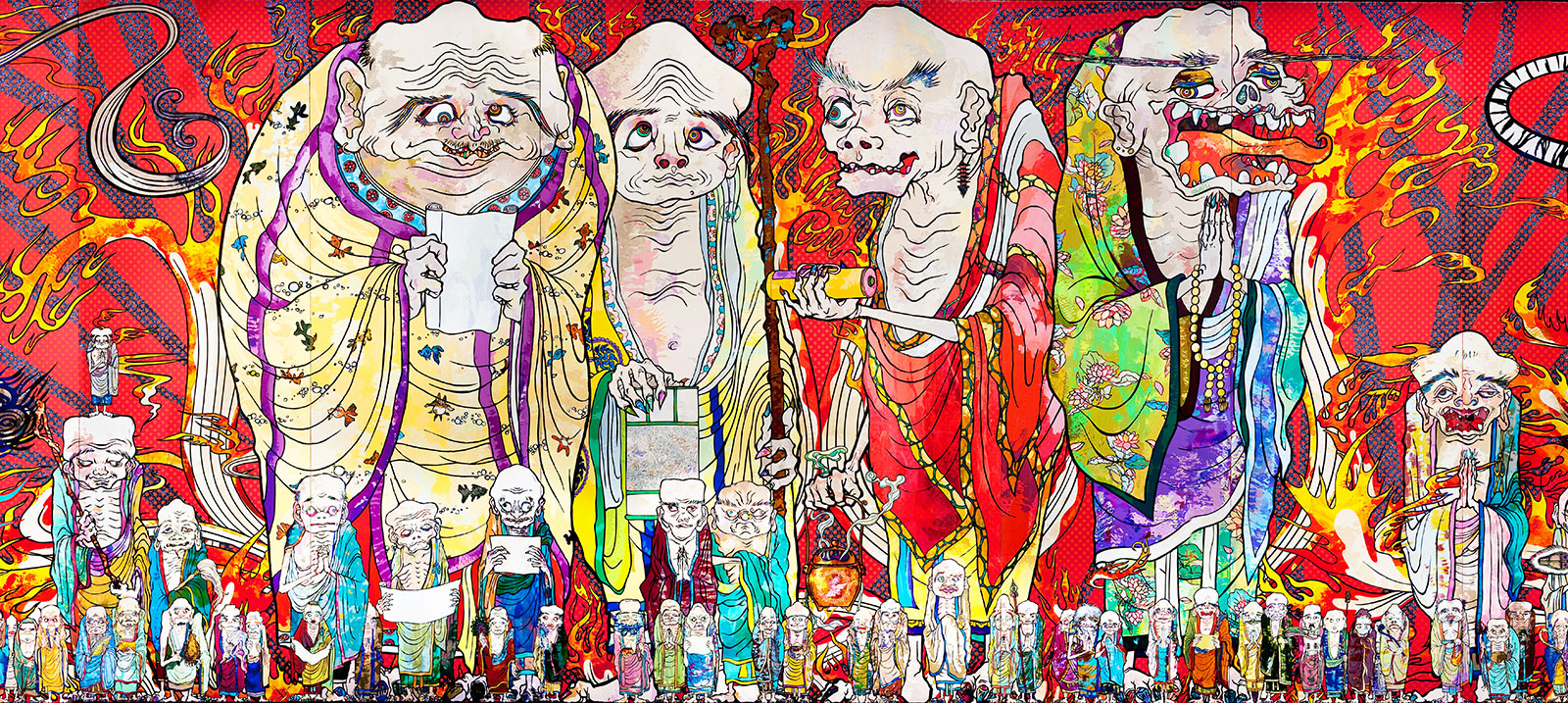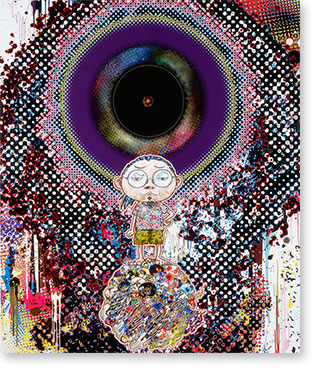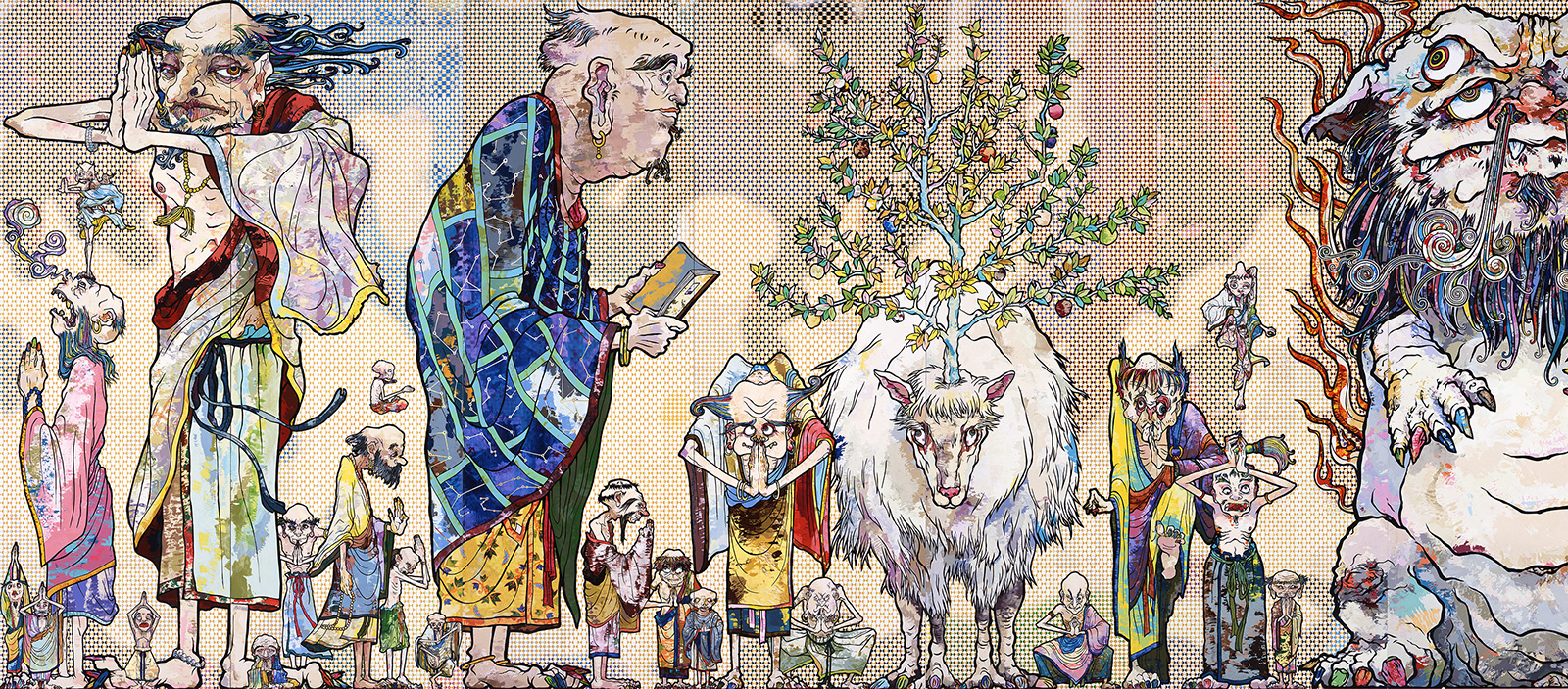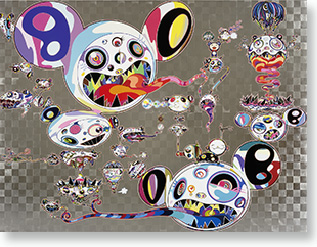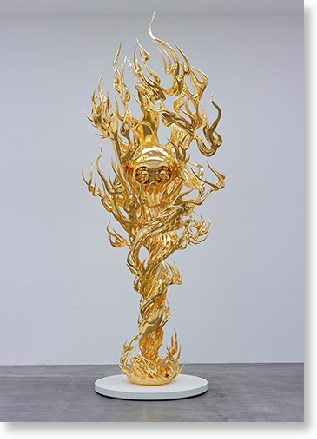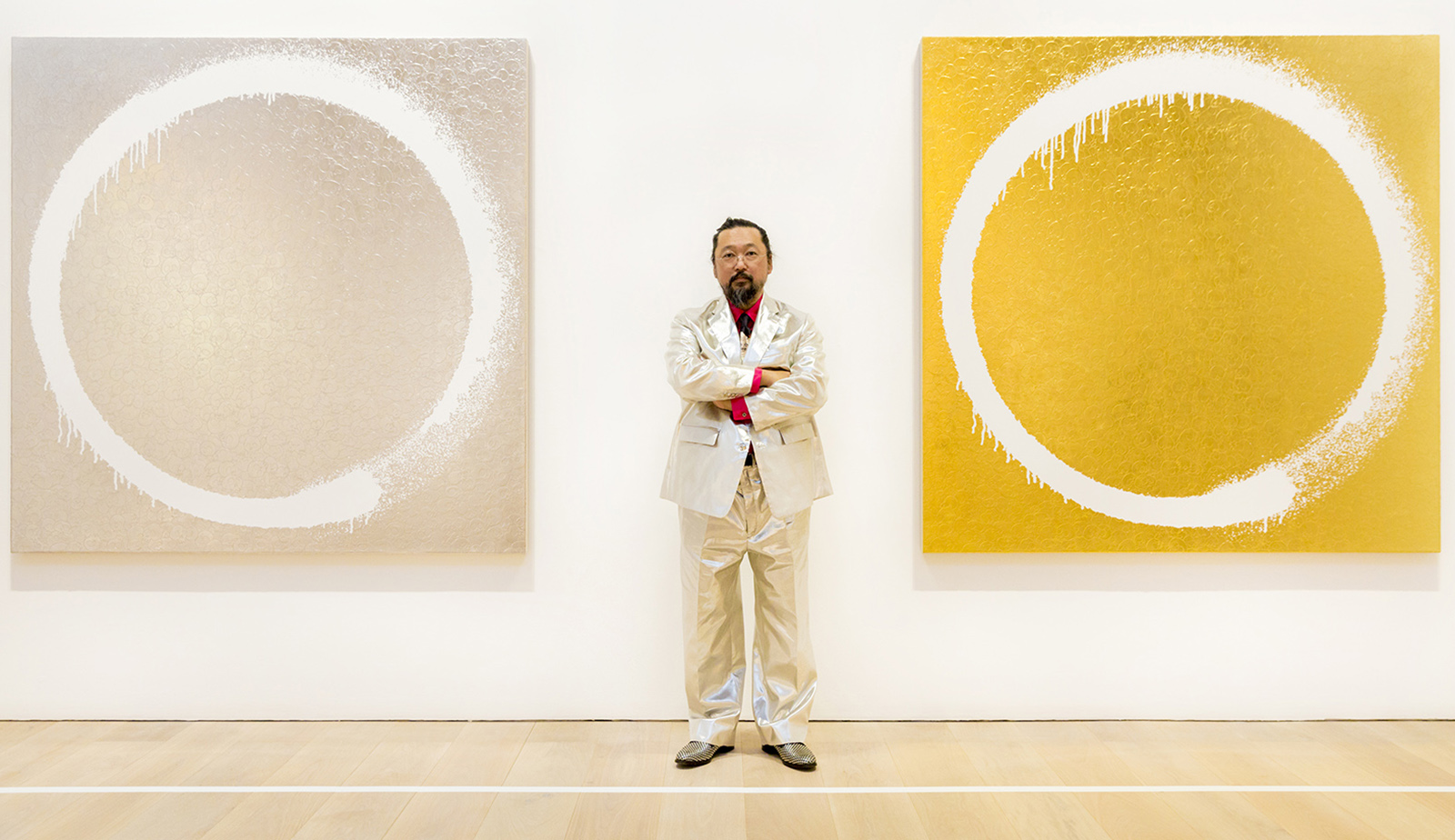Ebisu Yokocho has never looked so fabulous. It’s the night before Halloween and costumed women with talon-like nails and feathered eyelashes snake their way through a boisterous crowd crammed into this narrow alley of food stalls and bars. The smell of booze and grilled meat mingles with the scent of perfume, stage makeup and sweat. A wandering guitarist’s sing-a-long is interrupted by pro-wrestlers who come crashing to the ground in front of him, and everyone cheers. A buxom burlesque dancer gyrates to the Beatles’ “Twist and Shout.” Behind her, a sushi chef slices up a whole tuna into hundreds of bite-size servings, while nearby a glamorous girl in a pink wig hugs a man wearing a fish on his head. And somewhere among all the fun Takashi Murakami, dressed as a giant cartoon flower, is taking selfies with anyone who asks.
Say what you will about Japan’s most controversial artist, he sure knows how to throw an after-party.
It’s a much more serious mood earlier in the day when I speak with Murakami at the opening of “Takashi Murakami: The 500 Arhats” at the Mori Art Museum in Tokyo’s ritzy Roppongi Hills complex — but he is no less flamboyant. Dressed in a shiny silver suit more befitting of a rock star than an artist, he explains to The Japan Times just how little he cares about what his Japanese audience thinks of him, and why he has finally decided to hold a solo exhibition of his work here after 14 years.
“Actually, I didn’t want to do this show,” he admits, “but I had a relationship with the late Minoru Mori, the founder of the Mori Art Museum, his family and the current president, Shingo Tsuji. So when they said they really wanted me to do the show, I decided to do it.”
Murakami gestures at his flashy suit to make his next point.
“Japanese people would hate this outfit, but I really don’t have any desire to be understood by the Japanese audience or to even show them my work,” he says. “For the past 20 years there has been this tendency for the Japanese to be very jealous of people who are successful — especially those who succeed overseas in the West — and they bash them online. The Japanese media also only ask really silly questions that don’t get to the core of what I am trying to do. In fact, I rejected all Japanese media requests for this event.” Luckily the artist is more tolerant of the English-language press.
